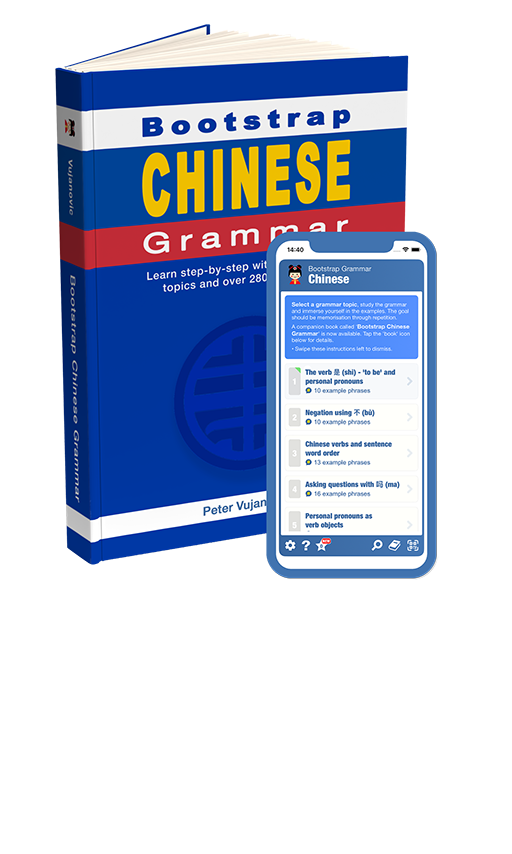Chinese grammar - Sequence of actions with 先 (xiān)...再 (zài) : 'first…then' |
|||
|
|||
The pair 先 (xiān) and 再 (zài) are commonly used together to indicate a sequence of actions. • 先 (xiān) means 'first'. • 再 (zài) means 'then', 'again' or 'next'. This pattern is equivalent to saying 'first... then...' |
| Examples: | |
|
先学习,再休息。
xiān xuéxí,#zài xiūxi. First study, then rest. |
|
|
先起床,再吃早餐。
xiān qǐchuáng,#zài chī zǎocān. First get up, then eat breakfast. |
|
|
先洗手,再吃饭。
xiān xí shǒu,#zài chī fàn. First wash your hands, then eat.
|
|
|
先去银行,再去超市。
xiān qù yínháng,#zài qù chāoshì. First go to the bank, then go to the supermarket. |
|
|
我先吃了饭,再看了电影。
wǒ xiān chī le fàn,#zài kàn le diànyǐng. I first ate, then watched a movie. |
|
|
她先洗了手,再吃了饭。
tā xiān xǐ le shǒu,#zài chī le fàn. She first washed her hands, then ate. |
|
|
我先穿了衣服,再出门。
wǒ xiān chuān le yīfu,#zài chūmén. I first got dressed, then I went out. |
|
|
你先煮米饭,再炒肉吗?
nǐ xiān zhǔ mǐfàn,#zài chǎo ròu ma? Did you first boil the rice, then next fry the meat?
|
|
 |
|




